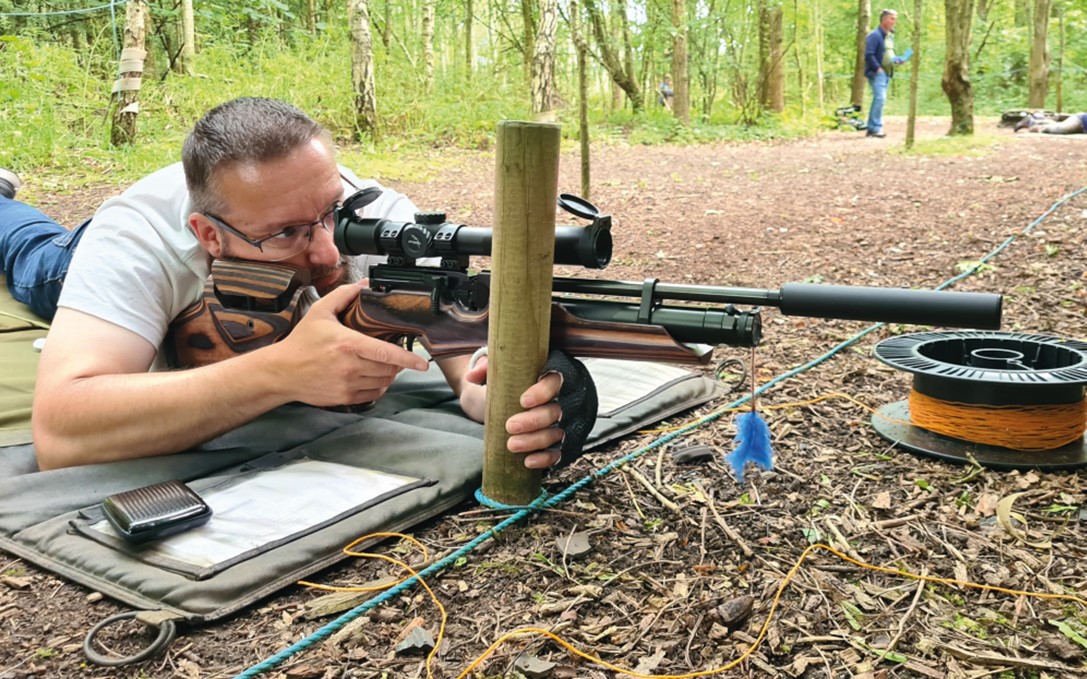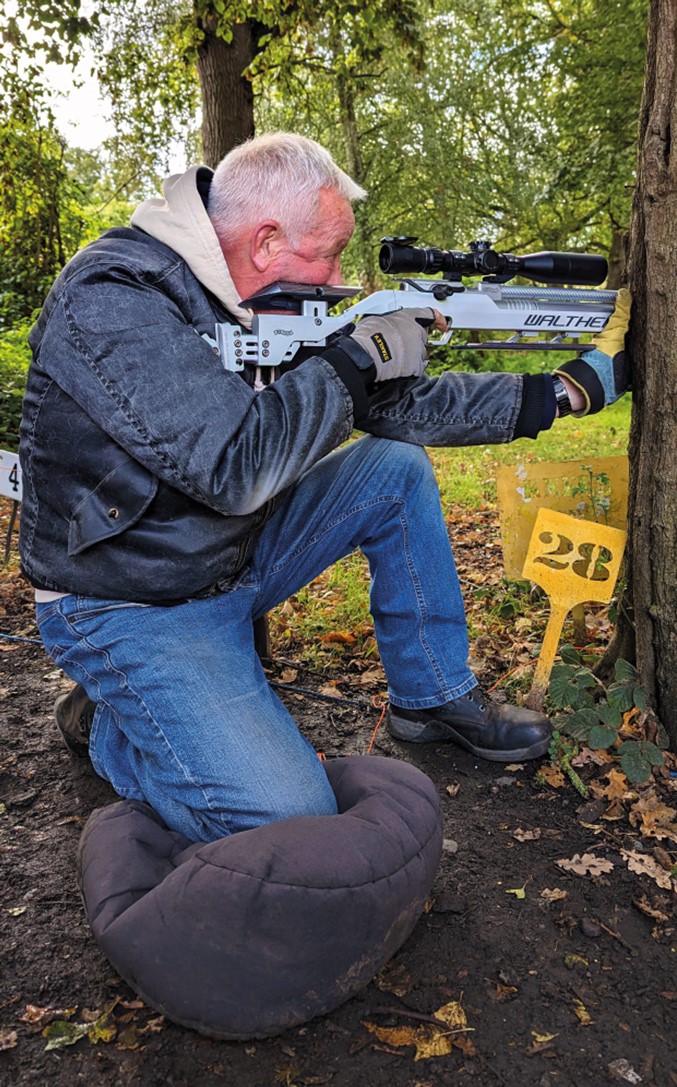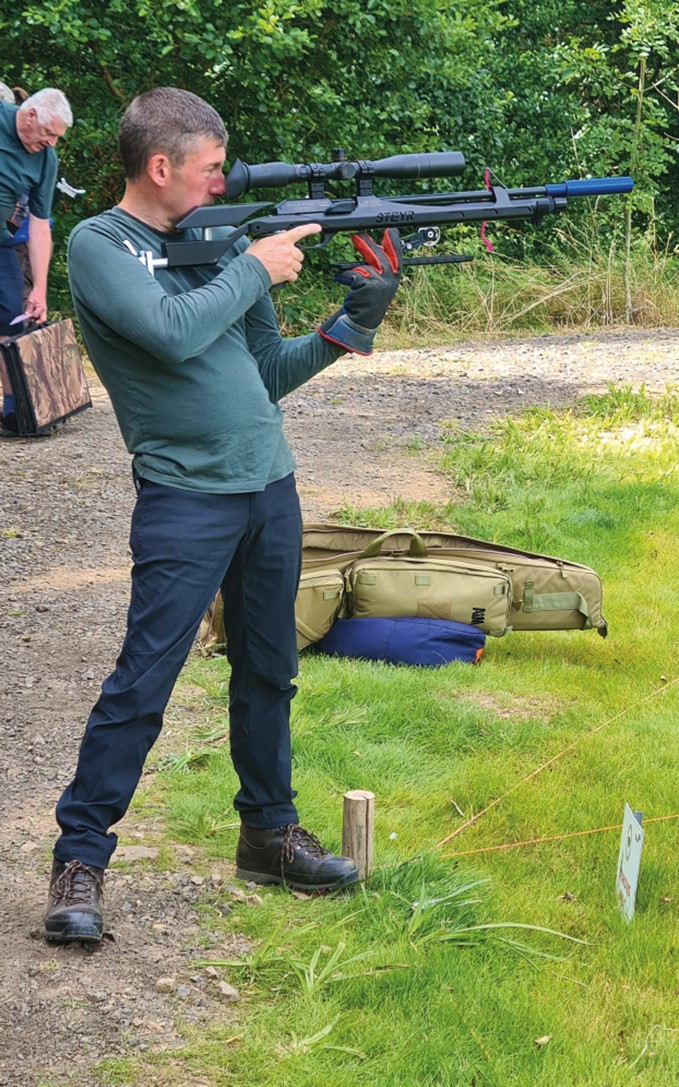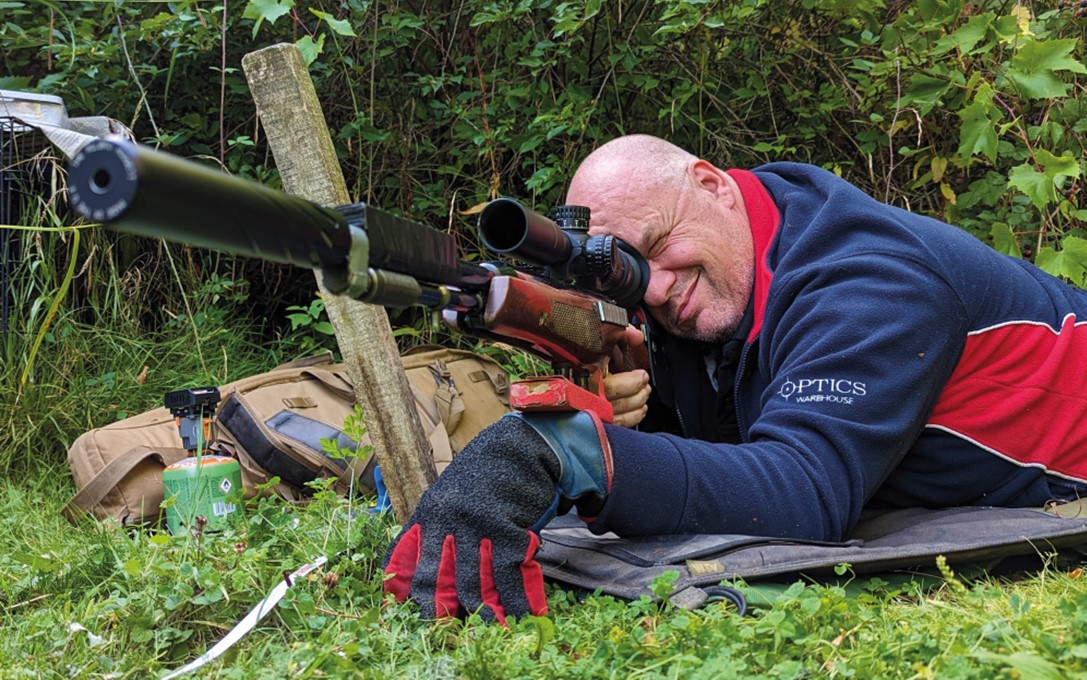Gary Chillingworth is talking about various shooting positions for HFT
Hello everyone. OK, I messed up – this month’s article was meant to be about building the ultimate silent target. I had it all sorted out and my plan was to write the article and also film it for my channel, ‘Life at the Range’ on Shooting and Country TV. Well, the day came and I started filming to show the difference between hitting a metal target and hitting my silent target, and guess what? Every time I shot the silent target it wasn’t silent – ‘thwack, thwack, thwack – and I was stuffed. So, that article has been put on hold and thanks to the Lifers (our community) I now have a better plan for doing it, so it’s all good, but it left me with a problem – two days to write a new article. I did what I always do when panic sets in – I ask for help, and I a fellow shooter asked me what kind of shots there are in HFT, and which ones to practise.
TYPES OF SHOT
In HFT (Hunter Field Target) you split your shots into four main categories; prone, kneeling, supported and unsupported, and there are subsections within each of these.
Prone:
The vast majority of your targets will be shot from the prone position. You lie behind the target, and part of you or the gun will need to be touching the peg in front of you. There are variations of the prone shot, and if you learn these, it will make your life easier, especially if you shoot a spring gun.
First, always practise from shooting on both sides of the peg. Sometimes, a target that’s hard to see from the left of the peg may be easy to see from the right. Shooting from the wrong side can be difficult because you won’t be able to lean the rifle against the support, and you might risk the rifle canting over. When on the wrong side, your hand will be gripping the rifle and the peg differently, and if you are shooting a springer, this change of hold will affect the way the rifle shoots. So, practise shooting from both side and notice whether or not it makes a difference.
The best way to shoot a target is with the butt of the rifle on the floor because this will give you maximum stability, but there will be targets placed specifically to force you to come up the peg, or risk hitting an obstacle, so train ‘up the peg’ – shooting up the peg causes me to have a different aim point. Again, practise from both sides of the peg, build muscle memory and learn the different aim points if you have them.
Another prone shot is ‘off the peg’. Place your elbow on the peg and use a spider hand as a rest for your gun. That way, you might be able to find a safer path to the target, and it’s a shot that is fairly easy with a PCP, but very hard with a springer because you can’t grip the rifle. If you can master all these positions, it will certainly help the way you shoot.
 The butt of the rifle on the deck for maximum stability.
The butt of the rifle on the deck for maximum stability.
Kneeling:
Next we move on to kneeling targets, and these come in supported and unsupported. For the unsupported version, you need to learn the basics; wrist must be forward of the knee; rear foot can’t be sat on or turned, and try to support your forearm along the forward thigh. You will often have targets high in the trees, and to get these you will need to shoot off your elbows – a very hard skill to master. If you can, get to a club, set a target low and a target high, and transition between the two – shooting targets at different height is a must.
For supported shots, you need to learn the two types of stance – the standard and the reverse kneeler. The standard is just like a regular kneeling shot, but you can now lean the rifle on or against a support; the reverse kneeler is where the front knee is placed on the floor and the rear foot is kept upright. This allows the shooter to rest his or her rear elbow on the rear knee to create a stable platform. Learn both of these techniques because they can be used to great effect.
 Classic supported kneeler with the rear leg supported by a cushion.
Classic supported kneeler with the rear leg supported by a cushion.
Standing Shots:
Next, we move onto standers and the free unsupported stander is the bane of most shooters’ lives. There are many techniques and holds, though, that will improve your shooting, and these go from having your elbow locked into your ribs, to the good old-fashioned artillery hold. Some shooters place the crosshair above the target, let it drop through the target and squeeze the trigger at the top of the kill zone. This falling technique can help side-to-side movement, but after years of shooting HFT, I’m still rubbish at standers and that is because I don’t practise them enough.
The supported stander is a very important shot, for me. I have problems with my knees and I try to stay away from kneelers, so as all kneeling shots can be taken standing, I have trained hard with the supported standers. You really must practise on thin trees, thick trees, posts, bails … anything you can, though. It’s very different shooting from a sapling than a 200-year-old oak that you can grip – and practise in the wet because trying to grip a slippery tree can be a real pain.
 Perfect technique for a free-stander, hip forward, elbow in the ribs.
Perfect technique for a free-stander, hip forward, elbow in the ribs.
DIFFERENT CONDITIONS
Once you have mastered all these shots on level ground, it is imperative to start practising them on targets that are high up and low down. Shooting a 15mm target 30 feet up a tree at 20 yards will cause the pellet to hit high (Rifleman’s rule), and shooting a target below your feet will also cause it to hit high if the angle is steep enough.
If you get the opportunity, shoot across water because the air density on cold days can drag the pellet down. Shoot high targets and you will see that a pellet travelling along the ground seems to take less wind than a pellet high up. If you are shooting in high wind, then a wind from behind will speed the pellet up and you will hit high, and a wind against will slow it down and cause you to hit low.
 The spider hand, off the peg shot can help you find your way around obstacles.
The spider hand, off the peg shot can help you find your way around obstacles.
BASIC TECHNIQUES
To win in competition, you need to master your basic techniques and you will do this by spending time on the practice courses and on the plinking ranges. Find a target and shoot it multiple times until you kill it every time, and make a mental note of why you missed in the first place. When you are training, never walk away from a target until you understand why you missed it, and always treat every shot as if it’s the one that is going to win you a world title. I hope this has helped, and I will get on with the silent target for next month.